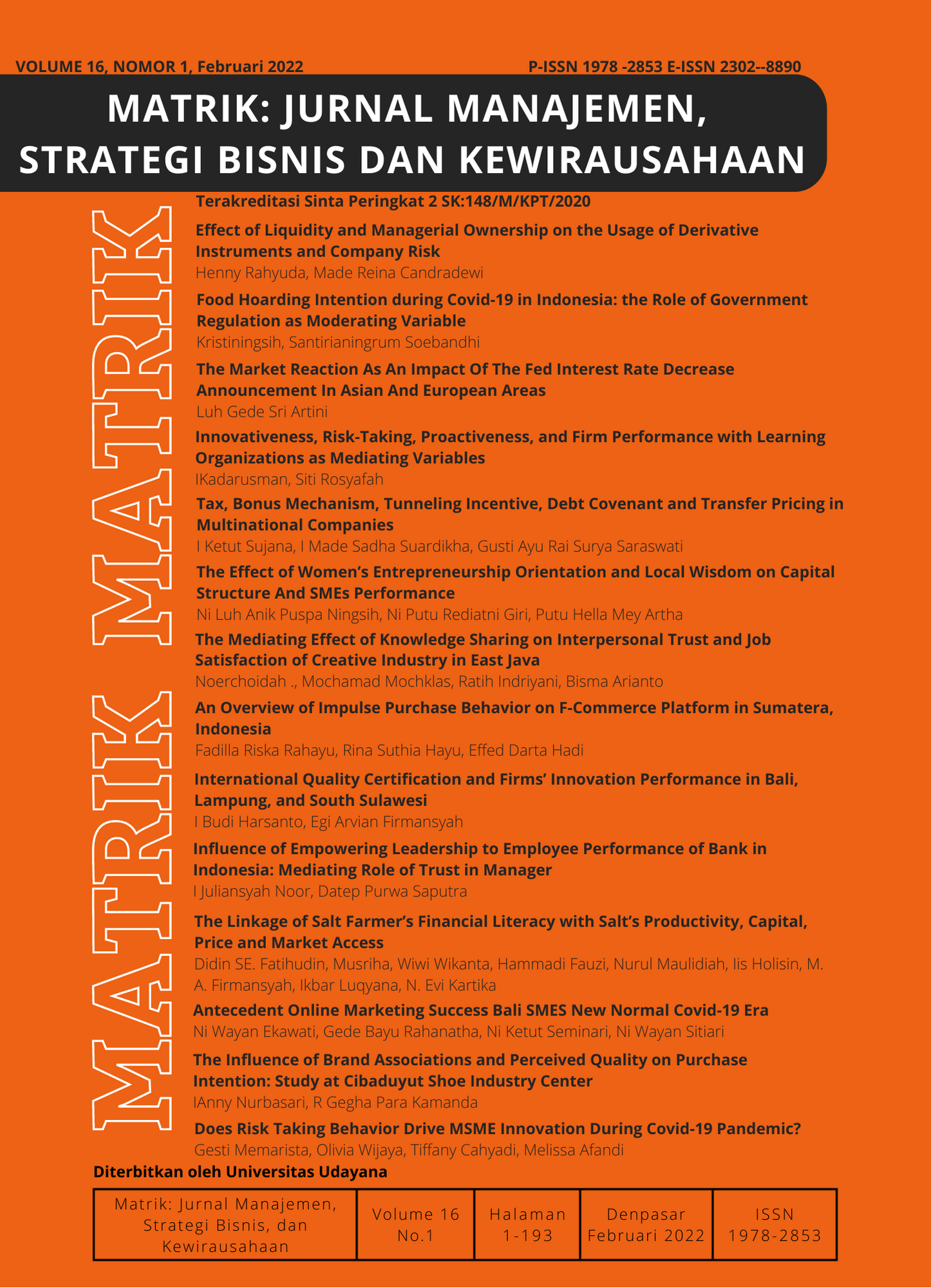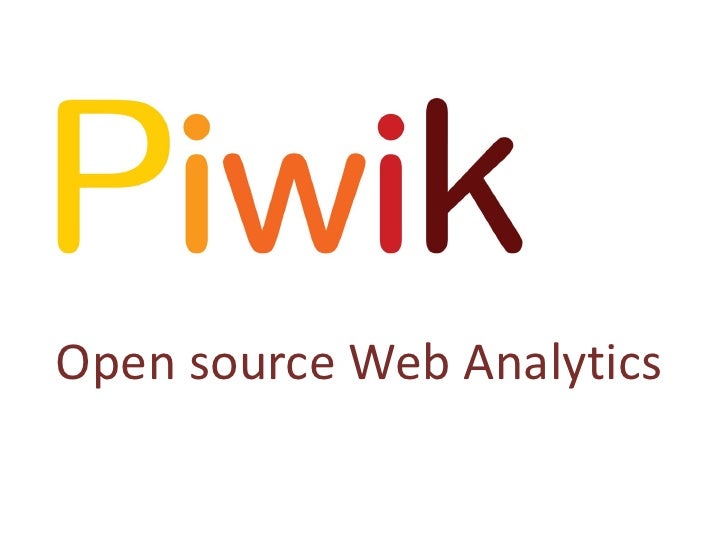Does Risk Taking Behavior Drive MSME Innovation During Covid-19 Pandemic?
Abstract
The study will contribute to the understanding of risk-taking behavior effect on the MSMEs innovation since the risk-taking behavior is the tendency of business owners for engaging in decisions that may have the potential to be dangerous to their business, especially for the family business to do some innovations nowadays, in the pandemic Covid-19 era. For the family business, the appropriate level of return that the business owner will obtain compensates their risk-taking behavior. These researchers used samples that consist of 307 MSMEs owners that categorized as the family business in Indonesia as the respondents by distributing online questionnaires. Furthermore, this paper also used control variables, such as the number of family members involved, generation level, founder-CEO duality, and business capital. This study used binary logistic regression for the analytical model. The results show that the business owner's risk-taking behavior, number of family members involved, generation level, founder-CEO duality, and business capital significantly influence MSMEs innovation in Indonesia.
Downloads
References
Chua, J. H., Chrisman, J. J., & Sharma, P. (1999). Defining the family business by behavior. Entrepreneurship Theory and Practice, 23(4), 19–39. https://doi.org/10.1177/104225879902300402
Daily, C. M., & Dalton, D. R. (1997). CEO and board chair roles held jointly or separately: Much ado about nothing? Academy of Management Executive, 11(3), 11–20. https://doi.org/10.5465/ame.1997.9709231660
Das, S. R., & Joshi, M. P. (2007). Process innovativeness in technology services organizations: Roles of differentiation strategy, operational autonomy and risk-taking propensity. Journal of Operations Management, 25(3), 643–660. https://doi.org/10.1016/j.jom.2006.05.011
Eisenhardt, K. M., & Martin, J. A. (2000). Dynamic capabilities: What are they?. Strategic Management Journal, 21(10/11), 1105–1121. http://www.jstor.org/stable/3094429
Fernández, Z., & Nieto, M. J. (2006). Impact of ownership on the international involvement of SMEs. Journal of International Business Studies, 37(3), 340–351. https://doi.org/10.1057/palgrave.jibs.8400196
Finkelstein, S., & D’aveni, R. A. (1994). CEO duality as a double-edged sword: How boards of directors balance entrenchment avoidance and unity of command. Academy of Management Journal, 37(5), 1079–1108. https://doi.org/10.5465/256667
Gedajlovic, E., Lubatkin, M. H., & Schulze, W. S. (2004). Crossing the threshold from founder management to professional management: A governance perspective. Journal of Management Studies, 41(5), 899–912. https://doi.org/10.1111/j.1467-6486.2004.00459.x
Gibb Dyer, W. (2006). Examining the “family effect” on firm performance. Family Business Review, 19(4), 253–273. https://doi.org/10.1111/j.1741-6248.2006.00074.x
Hipp, C., Tether, B. S., & Miles, I. (2000). The incidence and effects of innovation in services: Evidence from Germany. International Journal of Innovation Management, 04(04), 417–453. https://doi.org/10.1142/S1363919600000226
Lee, J. (2006). Family firm performance: Further evidence. Family Business Review, 19(2), 103–114. https://doi.org/10.1111/j.1741-6248.2006.00060.x
Li, H., & Atuahene-Gima, K. (2001). Product innovation strategy and the performance of new technology ventures in China. Academy of Management Journal, 44(6), 1123–1134. https://doi.org/10.2307/3069392
Litz, R. A., & Kleysen, R. F. (2001). Your old men shall dream dreams, your young men shall see visions: Toward a theory of family firm innovation with help from the Brubeck Family. Family Business Review, 14(4), 335–351. https://doi.org/10.1111/j.1741-6248.2001.00335.x
Lubatkin, M. H., Schulze, W. S., Ling, Y., & Dino, R. N. (2005). The effects of parental altruism on the governance of family-managed firms. Journal of Organizational Behavior, 26(3), 313–330. https://doi.org/10.1002/job.307
Meissner, D., & Kotsemir, M. (2015). Conceptualizing the innovation process towards the ‘active innovation paradigm’—trends and outlook. Journal of Innovation and Entrepreneurship, 5(1). https://doi.org/10.1186/s13731-016-0042-z
Memarista, G. (2016). Measuring the entrepreneur’s financial knowledge: Evidence from small medium enterprises in Surabaya. Jurnal Manajemen Dan Kewirausahaan, 18(02), 132–144. https://doi.org/10.9744/jmk.18.2.132–144
Memarista, G., & Puspita, A. M. A. (2021). Young investors’ instagram usage behavior and investment risk appetite. Management Research and Behavior Journal, 1(1), 15. https://doi.org/10.29103/mrbj.v1i1.3849
Nieto, M. J., Santamaria, L., & Fernandez, Z. (2015). Understanding the innovation behavior of family firms. Journal of Small Business Management, 53(2), 382–399. https://doi.org/10.1111/jsbm.12075
Rosenbusch, N., Brinckmann, J., & Bausch, A. (2011). Is innovation always beneficial? A meta-analysis of the relationship between innovation and performance in SMEs. Journal of Business Venturing, 26(4), 441–457. https://doi.org/10.1016/j.jbusvent.2009.12.002
Shimomura UNDP Indonesia Resident Representative. (2020). Impact of Pandemic on MSMEs in Indonesia. https://www.id.undp.org/content/indonesia/en/home/library/ImpactofCOVID19MSMEs.html.
Wang, X., & Chu, X. (2019). External financing and enterprises’ green technology innovation: A study based on the threshold model of firm size. Xitong Gongcheng Lilun Yu Shijian/System Engineering Theory and Practice, 39(8), 2027–2037. https://doi.org/10.12011/1000-6788-2018-1350-11
Wiklund, J., & Shepherd, D. (2003). Knowledge-based resources, entrepreneurial orientation, and the performance of small and medium-sized businesses. Strategic Management Journal, 24(13), 1307–1314. https://doi.org/10.1002/smj.360
Zahra, S. A. (2005). Entrepreneurial risk taking in family firms. Family Business Review, 18(1), 23–40. https://doi.org/10.1111/j.1741-6248.2005.00028.x
Zhang, L., Zhang, S., & Guo, Y. (2019). The effects of equity financing and debt financing on technological innovation: Evidence from developed countries. Baltic Journal of Management, 14(4), 698–715. https://doi.org/10.1108/BJM-01-2019-0011
 This work is licensed under a Creative Commons Attribution-ShareAlike 4.0 International License.
This work is licensed under a Creative Commons Attribution-ShareAlike 4.0 International License.

















